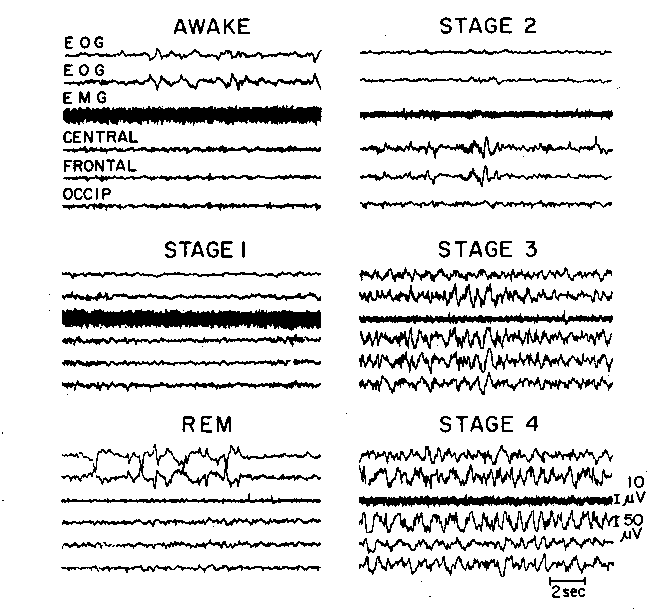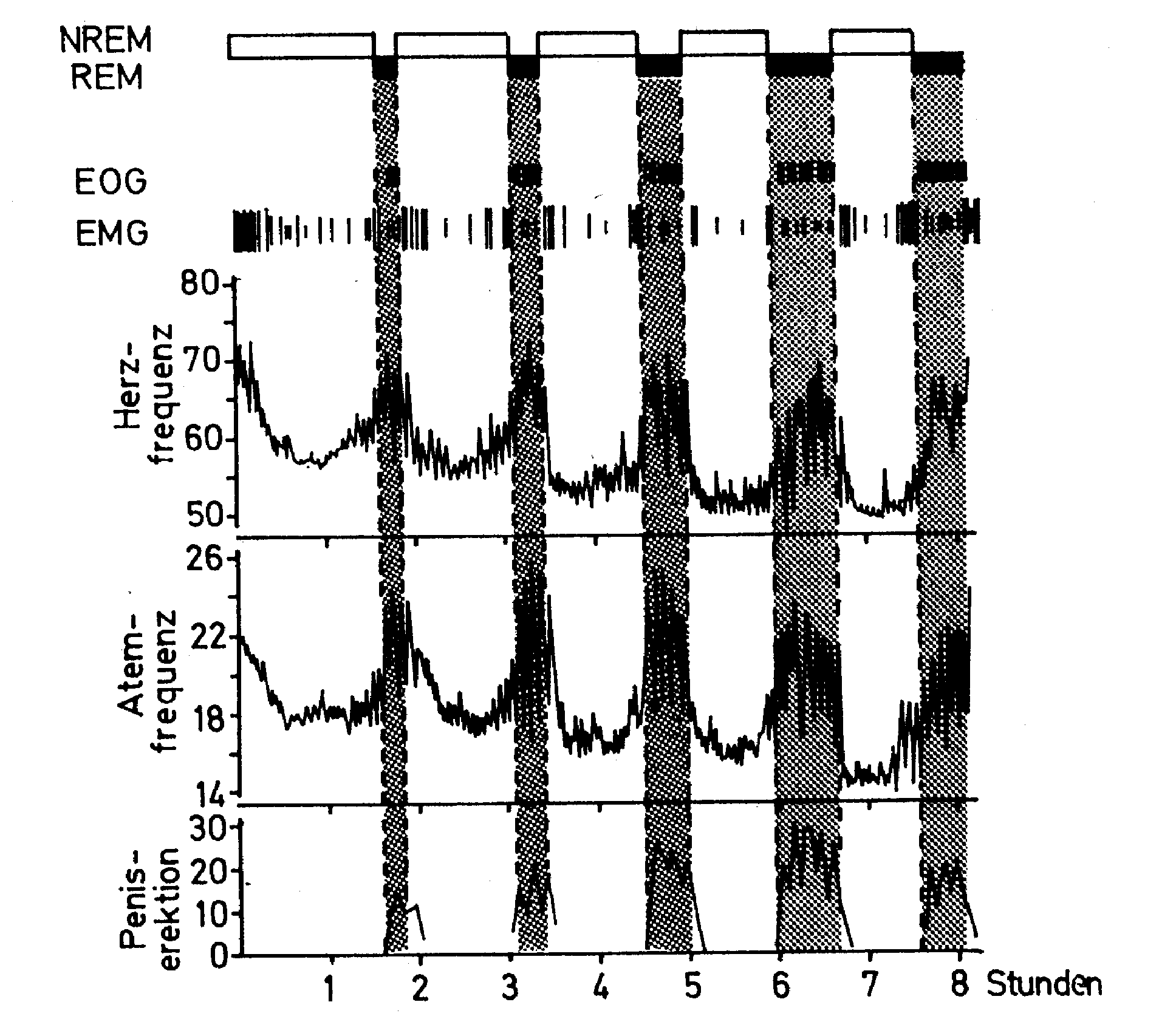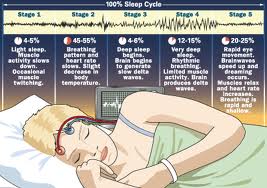REM / NREM phases in sleep
Sleep occurs in all mammals and seems to be a necessary, restorative process: animals deprived of sleep eventually die (Rechtschaffen et al., 1983; Hobson, 1988, pp. 287 - 288). Almost everyone now knows that sleep is not a "monotone" condition, but rather consists of a series of states that go through cycles roughly 90 minutes in duration. This was discovered by a graduate student named Eugene Aserinsky at the University of Chicago in 1952, while monitoring the sleep of babies, and his findings were studied and elaborated by Kleitman and Dement (Woods & Greenhouse, 1974, pp. 274 - 277; Hobson, 1988, pp. 139 - 146). A typical night of sleep, depicted very schematically, might look like this (taken from Woods & Greenhouse, 1974, p. 285):

Closest to consciousness (as measured with the EEG) is the so-called Rapid Eye Movement (REM) or paradoxical sleep state (shown as the thick, black sections in the above figure). The eyes move under the closed eyelids and persons awakened from this state often report vivid dreaming. The EEG is characterized by high-frequency, low-voltage activity, just as when the person is awake (hence the designation "paradoxical sleep"). In addition, there is a state that occurs just after one goes to sleep in which rapid eye movements do not occur and this is referred to as stage I sleep. The first REM phase occurs 50 - 70 minutes following sleep onset in adults, but only 3 - 4 hours after sleep onset in 4 - 7 year olds (Woods & Greenhouse, 1974, pp. 338). It even occurs in animals and humans that have no visual cortex (Woods & Greenhouse, 1974, pp. 352 - 353). The figure below shows what the various sleep stages look like in terms of their associated EEG curves:

Deeper sleep states (stages II to IV) are marked by lower-frequency, higher-voltage phenomena. Dream reports from subjects awakened from these states tend to involve less activity or may even resemble more thought-like mentation (Woods & Greenhouse, 1974, pp. 278 - 286, 300 - 302; Hobson, 1988, pp. 144 -145). They also tend to be shorter and less elaborate (Foukes, 1962; Faraday A, 1972, pp. 41-42; Foulkes & Schmidt, 1983; Cavallero et al., 1992; Berger. 1994). Cavallero and coworkers found that dream reports from early in the night are shorter than those from later stages of sleep and that this does not depend on whether they come from NREM awakenings or REM ones (Cavallero et al., 1990). Domhoff went further and insisted that the similarities between NREM and REM dreams outweigh any differences (1985, p. 120). Solms (1997, p. 55) goes so far as to state, "dreaming is not causally dependent on REM" and offers an impressive array of physiological evidence to back this up.
The following set of graphs, taken from a German publication, provides another view of a typical night of sleep. REM stands for rapid eye movement phases, NREM for non-REM phases, EOG for the detection of ocular movements, EMG for the detection of muscular activity, "Herzfrequenz" refers to pulse rate, "Atemfrequenz" to breathing, "Peniserektion" to penis tumescence which occurs periodically in connection with REM phases, and "Stunden" is German for hours (of sleep) (Riemann, 1990, p. 27).

Next section List of sections List of chapters




